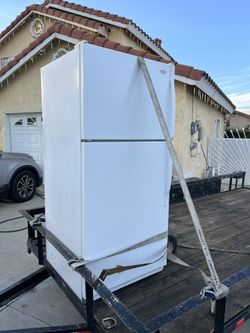When it comes to moving large appliances, few tasks seem as daunting as transporting a refrigerator. A common question we encounter at TheKitchenApplianceDad.com is whether it’s okay to transport a refrigerator lying down. This article will delve into the best practices for moving your refrigerator safely, ensuring it continues to operate efficiently after the move.
Before we tackle the main question, it’s essential to understand a bit about how refrigerators work. Refrigerators operate using a compressor that circulates refrigerant through evaporator and condenser coils. This system is designed to operate in a vertical position because the oil in the compressor needs to stay in place to lubricate the moving parts properly.

Potential Damage to the Compressor:
When a refrigerator is laid on its side, the oil inside the compressor can flow into the cooling lines, which can cause issues when the fridge is turned back on. If the refrigerator is not allowed sufficient time for the oil to settle back into the compressor upon returning it to an upright position, the compressor may run without adequate lubrication. This can lead to mechanical failures or decreased efficiency.
Risk of Coolant Leakage:
Laying a refrigerator down can also potentially cause coolant to leak. This leakage can affect the cooling efficiency of your refrigerator and will require professional repair services to resolve, adding extra costs and complications to your move.
If transporting your refrigerator in an upright position is not feasible, here are some guidelines to minimize the risks:
1. Choose the Right Side:
If laying the refrigerator down is unavoidable, always consult the owner’s manual first. Some manufacturers recommend laying the refrigerator on a specific side to minimize the risk of oil moving out of the compressor. Generally, it is advised to lay the fridge on its side opposite the hinges (the side that opens is facing up) to reduce pressure on the door hinges and handle.
2. Secure the Refrigerator:
Ensure the refrigerator is securely fastened during transport. Use moving straps to hold it in place and prevent it from shifting, which could cause internal components to loosen or break.
3. Short Transportation Time:
Try to keep the time the refrigerator is laid down as short as possible. The longer it remains horizontal, the more likely it is that oil will seep into the cooling lines.
4. Allow Rest Time:
Once you have moved the refrigerator to its new location, do not plug it in immediately. Set it upright and allow it to sit for at least the same amount of time it was laying down, but ideally for 24 hours. This duration allows the oil to flow back into the compressor, ensuring it is well lubricated when it starts running again.
5. Check for Leaks and Sounds:
After you plug the refrigerator back in, listen for any unusual noises and check for leaks. Odd sounds or leaking fluid can indicate that something went wrong during the transport. If either occurs, it’s advisable to contact a professional technician to inspect the refrigerator.
Renting an Appliance Dolly:
To avoid the risks associated with laying your refrigerator down, consider renting an appliance dolly. These dollies are specifically designed to transport refrigerators safely in an upright position. They also make it easier to navigate stairs and tight spaces.
Professional Moving Services:
If you’re unsure about moving the refrigerator yourself, professional movers are a good option. They have the experience and equipment to handle large appliances properly and can ensure that your refrigerator is moved without any issues.
Transporting a refrigerator doesn’t have to be a nerve-wracking experience. By following these guidelines, you can ensure your refrigerator survives the move without any lasting damage. For more tips and advice on handling kitchen appliances, keep visiting us here at TheKitchenApplianceDad.com.


